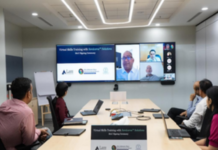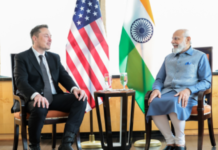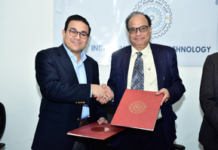By Sahana Ghosh
Kolkata– Science and technology ties between nations working together is the key to addressing global challenges and these associations transcend administrations, says Sethuraman Panchanathan, the first Indian American to be appointed to the US National Science Board by President Barack Obama.
As the arrow points up to India-US collaborations in recent years, science and technology is increasingly assuming importance as an ambassador to build relationships, Panchanathan contended.
“By partnering with people who understand the context across the globe, we can solve grand challenges much better, more efficiently and at a much greater speed. I find that science and technology is becoming increasingly a significant platform for people wanting to work together and I see a lot more promise in the future for strong collaborations between India, the US and across the globe,” Panchanathan told IANS in an interview here.
Asked about apprehensions on the present ties being affected with Obama’s presidency coming to an end, Panchanathan asserted: “Science and technology typically transcends administrations. S&T focuses on problems that we are all trying to solve.”
Combating climate change and clean energy are the new grounds covered during Obama’s presidency, domains which involve scientists, energy experts and cutting-edge technology ventures.
Leadership from both the countries helped galvanise global action to combat climate change and culminated in the historic Paris Agreement reached last December — which India ratified on Sunday.
“We are already working together on global-scale problems like climate, sustainability, rapid urbanisation and energy. While there may be some cultural and geographical variations, the fundamental problem to be tackled is the same.
“But in order to tackle problems that are global, science and technology advancements only in one country cannot alone solve such problems,” explained Panchanathan, Arizona State University’s executive vice president of the Office of Knowledge Enterprise Development.
Earlier this year, India and the US signed an agreement for a new LIGO (Laser Interferometer Gravitational-wave Observatory) project in India during Prime Minister Narendra Modi’s visit to Washington. The agreement was signed between India’s Department of Atomic Energy and US’ National Science Foundation (NSF).
The LIGO Project aims to detect cosmic gravitational waves and to develop gravitational-wave observations as an astronomical tool.
“India can be a significant contributor in this area; so we are trying to bring people together. Like LIGO, there are many areas we have common interests. They are common interests, not competing interests, and to make progress at scale and speed we need to bring our intellectual prowess together towards finding real solutions,” Panchanathan, an IIT-Madras alumnus, said.
Known for his expertise in designing assistive technologies and accessible environments for the differently-abled, the computer engineering and informatics expert highlighted how domains like haptics (the study of touch to convey information such as nonverbal communication) are gaining traction.
“We use vision and speech a lot but we don’t use much of touch-based feedback. It’s an under-explored area and there’s are a lot of opportunities to augment our perception by being able to take haptic cues and integrate them with audio-visual cues.
“To me science and technology is a great ambassador… to build relationships across the globe because it is about people who have a common agenda, who get excited by working together and solve larger problems that impact humanity,” Panchanathan added. (IANS)






